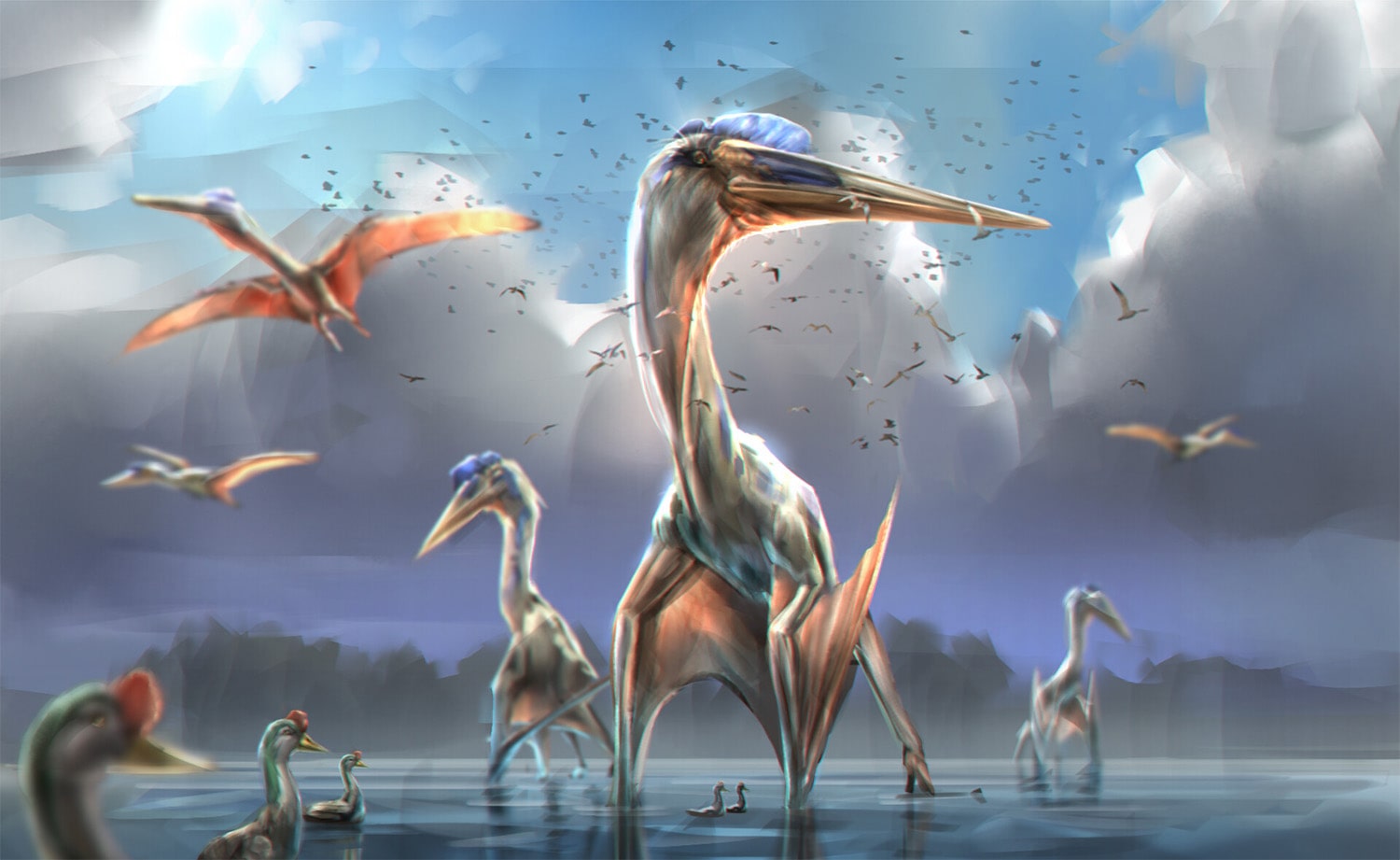
29 interesting facts about Quetzalcoatlus
- 👁️ 282
Quetzalcoatlus, often referred to simply as “quetz,” stands as one of the most fascinating and awe-inspiring creatures from the age of dinosaurs. Named after the Mesoamerican feathered serpent god Quetzalcoatl, this giant pterosaur ruled the skies of Late Cretaceous North America about 68 million years ago. Its size and lifestyle have been the subject of much scientific research and debate, making it a creature of great interest not just to paleontologists but to anyone fascinated by the prehistoric world. From its incredible wingspan to its unique feeding habits, Quetzalcoatlus pushes the boundaries of what we know about flying creatures. Let’s explore some intriguing and informative facts about Quetzalcoatlus that highlight its significance in the ancient skies.
- Quetzalcoatlus is one of the largest known flying animals of all time, with an estimated wingspan of up to 10-11 meters (33-36 feet).
- It belonged to a group of pterosaurs known as Azhdarchidae, characterized by their long necks and legs, and large heads.
- The first Quetzalcoatlus fossils were discovered in Texas in 1971, in the Big Bend National Park.
- Despite its massive size, Quetzalcoatlus was likely an adept flyer, capable of soaring long distances across continents.
- Its name, Quetzalcoatlus, is derived from the Aztec god Quetzalcoatl, who was represented as a feathered serpent.
- Quetzalcoatlus lived during the Late Cretaceous period, around 68-66 million years ago, just before the mass extinction event that wiped out the dinosaurs.
- Scientists believe that Quetzalcoatlus could launch itself into the air using its strong front limbs, similar to modern birds of prey.
- Unlike many other pterosaurs, Quetzalcoatlus is thought to have been more of a terrestrial feeder, hunting small animals on the ground.
- Its diet likely consisted of small vertebrates and carrion, which it would snatch up using its pointed beak.
- Quetzalcoatlus had a relatively lightweight body for its size, with hollow bones that aided in flight.
- The creature’s long, stilt-like legs suggest it was well-adapted to walking on land, possibly covering large territories.
- Some studies suggest Quetzalcoatlus could fly at speeds of up to 80 kilometers per hour (50 miles per hour).
- The exact mechanism of Quetzalcoatlus’s flight, including how it took off and landed, remains a topic of ongoing research.
- There is evidence to suggest that Quetzalcoatlus nested in colonies, much like some species of birds and crocodilians.
- Its fossils have been found in what was once a vast inland sea that divided North America, indicating it lived near water sources.
- Quetzalcoatlus’s wings were covered in a membrane of muscle and skin, which would have been pulled taut during flight.
- Despite its reptilian nature, some depictions of Quetzalcoatlus in popular culture inaccurately show it covered in feathers.
- Its closest living relatives are believed to be crocodilians and birds.
- Quetzalcoatlus is often featured in documentaries and films about prehistoric life, highlighting its popularity and intrigue.
- The pterosaur had a relatively small body compared to its wings, with most of its weight concentrated in the chest and wing muscles.
- Reconstructions of Quetzalcoatlus often depict it with a crest on its head, although the function of this feature is not fully understood.
- Quetzalcoatlus’s habitat would have been a diverse ecosystem with a mix of open plains and coastal areas.
- It is one of the last known species of large pterosaurs before the mass extinction at the end of the Cretaceous period.
- The wings of Quetzalcoatlus could fold back against its body when not in flight, allowing it to move more easily on the ground.
- Some paleontologists have hypothesized that Quetzalcoatlus could have been scavengers, similar to modern vultures.
- Its fossil remains are relatively rare, making each new discovery valuable for understanding its biology and ecology.
- The exact coloration of Quetzalcoatlus is unknown, as skin pigments do not fossilize well.
- Models of Quetzalcoatlus’s flight have been used in aeronautical engineering to study the mechanics of large-scale flapping flight.
- Research on Quetzalcoatlus contributes to our understanding of pterosaur evolution and diversity in the Late Cretaceous.
Quetzalcoatlus stands as a testament to the incredible diversity and complexity of prehistoric life, challenging our understanding of biology, aerodynamics, and evolution. Its remarkable size and adaptation to flight make it one of the most intriguing creatures of the Mesozoic era. As paleontologists continue to uncover new fossils and apply advanced technologies to their research, our knowledge of Quetzalcoatlus and its world will undoubtedly grow, shedding light on the mysteries of these magnificent flying giants of the past.
Quetzalcoatlus, often referred to simply as “quetz,” stands as one of the most fascinating and awe-inspiring creatures from the age of dinosaurs. Named after the Mesoamerican feathered serpent god Quetzalcoatl, this giant pterosaur ruled the skies of Late Cretaceous North America about 68 million years ago. Its size and lifestyle…